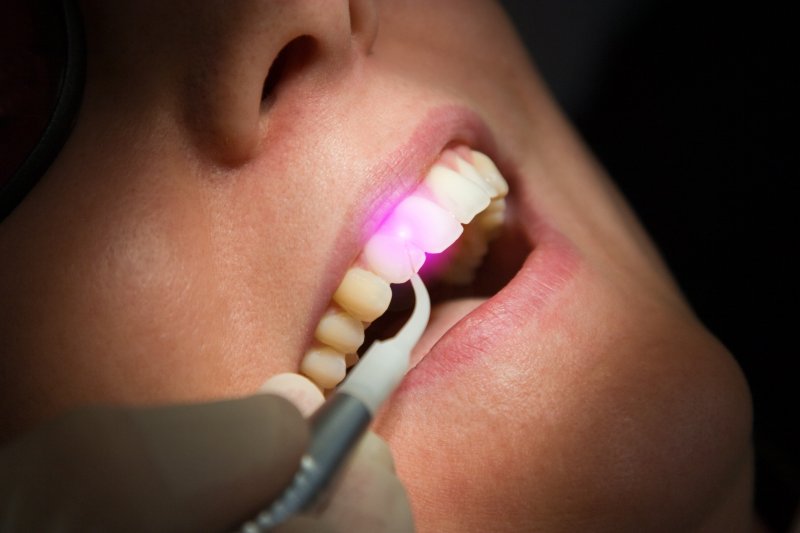
The future is finally here. No, there are no mass-produced flying cars, but some dentists are now using lasers. The soft tissue laser is a modern advancement from traditional instruments and provides several advantages.
If you’re curious how a laser could possibly be used to treat teeth, continue reading.
What Is a Soft Tissue Laser?
Unlike the ray guns seen in sci-fi movies since the 1960s, these modern instruments are made for precision work with as little damage as possible. Erbium lasers like Biolase are able to cut into soft tissues and cauterize the vessels instantly, causing little to no bleeding.
Soft tissue lasers cannot harm hard materials like teeth and bone, and they are safe for use around dental implant sites, crowns and fillings, and other restorations that might bring treatment close to the teeth.
This allows lasers to offer much more accurate results when compared with other instruments that perform the same functions.
What Types of Treatments Benefit from a Soft Tissue Laser?
There are many uses for dental laser technology. Below are some of the more common and optimal treatments that dentists can perform using a soft tissue laser:
- Gum Recontouring – This treatment attempts to correct what is known as “gummy smile.” This stems from excess gum tissue that forms around teeth, making them look smaller. When this treatment is done with a laser instead of a traditional instrument, it results in decreased pain and less bleeding after the treatment.
- Gum Disease Treatment – Bacteria from plaque like to gather and hide in small pockets between your teeth and gums. This is what causes gum disease. Lasers can be used to remove diseased tissue and bacteria almost instantly. Since the laser emits little heat, sound, or vibration it can often be performed without anesthetic.
- Dental Implant Recovery – Dental implants are surgically placed in your jawbone. To get to the bone, the gums must be parted. Soft tissue modifications performed around the implant site are dramatically sped up thanks to laser technology. It also minimizes trauma from the treatment, fostering faster healing.
While these are some common uses of dental laser technology, its applications are continually expanding in the field of dentistry. Who knows what other uses could be found in the next decade?
Laser technology offers precision, reduced discomfort, and faster healing times, making it a valuable tool in modern dental practice. If you’re considering any of these treatments, discuss the option of laser dentistry with your dentist for a potentially more comfortable experience.
About the Author
Dr. Carole Emanuel has been practicing dentistry for over 25 years. After all this time, her favorite part of the job is still getting to know her patients and their families. Dr. Emanuel completed her dental doctorate at the Indiana University School of Dentistry and has since then continued her education through various programs and professional organizations, harnessing the latest in dental technology. To schedule an appointment at Carole Emanuel, DDS, call (303) 986-0090 or visit the website to explore other services.

